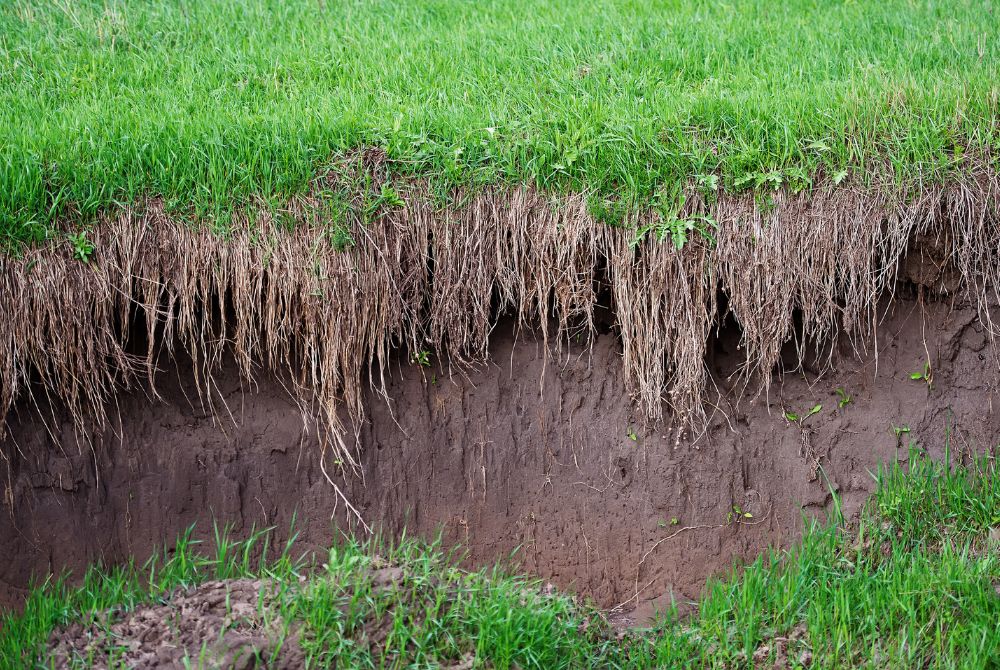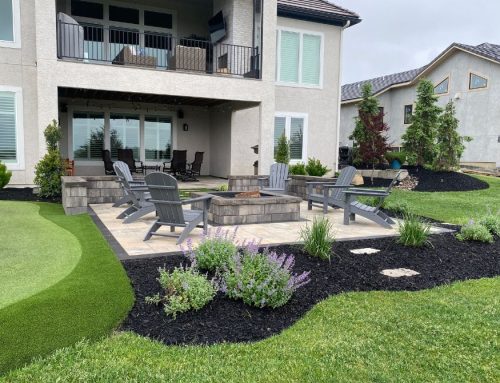Soil erosion has become an increasingly pressing environmental concern due to human activities and changing weather patterns. Whether caused by heavy rainfall, wind, or human activity, soil runoff can lead to the loss of fertile topsoil, degradation of water quality, and damage to surrounding ecosystems. However, with the right strategies in place, such as hardscaping and landscaping, we can mitigate soil erosion and preserve the integrity of our landscapes. In this blog post, we’ll explore the importance of hardscaping and landscaping in erosion control and provide practical tips for preventing soil runoff.
Understanding Soil Erosion
Before delving into the role of hardscaping in erosion control, it’s essential to understand the factors that contribute to soil erosion. Natural elements such as rainfall, wind, and slope gradient can accelerate the erosion process, particularly on bare soil surfaces. Human activities such as construction, agriculture, and deforestation further exacerbate soil erosion by removing vegetation cover and disrupting natural drainage patterns.
The Role of Hardscaping
Hardscaping involves utilizing inert materials like stone, brick, concrete, and wood to create functional and aesthetically pleasing outdoor spaces. When strategically implemented, hardscaping features can effectively reduce soil erosion by:
Creating Physical Barriers:
Hardscape elements such as retaining walls, stone terraces, and raised beds act as physical barriers that prevent soil from being washed away by rainfall or runoff. These structures help stabilize slopes, minimize soil displacement, and protect vulnerable areas from erosion damage.
Promoting Water Management:
Properly designed hardscapes incorporate drainage systems, such as French drains, permeable pavers, and gravel pathways, to channel water away from sensitive areas. By controlling the flow of water and reducing surface runoff, hardscaping helps prevent soil erosion and minimizes the risk of flooding.
Enhancing Vegetation Stability:
Hardscape features, such as edging materials and retaining walls, provide support and protection to surrounding vegetation. By preventing soil movement and root exposure, hardscaping helps maintain the stability and health of plants, trees, and shrubs, thereby reducing the likelihood of erosion.
Harnessing the Power of Landscaping in Preventing Soil Erosion
Landscaping offers a powerful solution to combat erosion and preserve the integrity of our soil. Let’s explore the vital role landscaping plays in preventing soil erosion and how it contributes to creating sustainable outdoor environments.
Strategic Planting:
Strategic planting is one of the most effective ways landscaping prevents soil erosion. By strategically selecting and arranging vegetation, landscaping helps anchor soil with robust root systems. Trees, shrubs, and groundcovers act as natural barriers, reducing the impact of rainfall and wind erosion. Additionally, plants’ dense foliage helps absorb excess water, minimizing surface runoff and erosion.
Terracing and Contouring:
Landscaping techniques such as terracing and contouring are essential for managing water flow and preventing soil erosion on sloped terrain. Terracing involves creating level platforms or steps on steep slopes, effectively reducing the speed of water. Contouring, on the other hand, follows the natural contours of the land, minimizing soil disturbance and promoting water retention. These methods not only prevent soil erosion but also create visually appealing landscapes.
Mulching:
Apply mulch to bare soil surfaces to protect against erosion, retain moisture, and suppress weed growth. Natural mulching options like wood chips, straw, or shredded bark offer added advantages by enhancing soil composition and fertility gradually.
Practical Tips for Preventing Soil Erosion
Now that we’ve discussed the role of hardscaping and landscaping in erosion control, let’s explore some practical tips for implementing these strategies effectively:
Soil Erosion Site Assessment:
Perform a comprehensive evaluation of your landscape to identify areas prone to erosion and determine the underlying causes. Consider factors such as soil type, slope gradient, and drainage patterns to develop an erosion control plan tailored to your specific needs. The slope gradient plays a crucial role in determining the effectiveness of erosion control measures. Areas with steep slopes are at a higher risk of erosion and may require additional reinforcement, such as terracing or retaining walls, to prevent soil erosion. Conversely, gentle slopes may benefit from natural drainage features, such as swales or berms, to redirect water away from vulnerable areas.
Retaining Walls and Barriers:
Install retaining walls, boulders, or vegetative barriers to create physical barriers that prevent soil movement and erosion. Retaining walls are versatile and can be crafted from a range of materials, including concrete blocks, natural stone, or even timber, depending on your aesthetic preferences and budget.
French Drains:
Install French drains or subsurface drainage systems to collect and redirect water away from vulnerable areas. French drains consist of perforated pipes surrounded by gravel or rock, which allow water to drain freely while preventing soil erosion.
Swales:
Construct swales or shallow channels along contour lines to capture and slow down surface runoff. Swales help infiltrate water into the soil, reduce erosion, and replenish groundwater levels, making them effective erosion control features for sloping landscapes.
Landscape Management:
Landscaping employs strategic planting, terracing, and contouring techniques to combat soil erosion effectively.
- Incorporate native plants, grasses, and groundcovers into your landscape design to help stabilize soil, reduce erosion, and enhance biodiversity. Strategic planting utilizes vegetation to anchor soil with robust root systems, reducing the impact of rainfall and wind erosion.
- Terracing creates level platforms on steep slopes, slowing water runoff and promoting infiltration, while contouring follows natural land contours, minimizing soil disturbance and enhancing water retention. These methods work together to prevent soil erosion and create visually appealing landscapes.
- Mulching protects against erosion, retains moisture, and suppresses weed growth.
- Natural mulching options like wood chips, straw, or shredded bark offer added advantages by enhancing soil composition and fertility gradually.
- Regular maintenance, including mulching, watering, and pruning, will ensure the health and longevity of your vegetation.
Regularly monitor your hardscape features and vegetation for signs of erosion, settling, or damage. Implement proactive maintenance measures, such as repairing cracks, replacing worn-out materials, and controlling weed growth to preserve the integrity of your landscape.
Working with a Professional to Prevent Soil Erosion
When you work with Integrity Hardscapes to prevent soil erosion, we develop a comprehensive plan for integrating erosion control measures into your landscape design. We will help you choose hardscape materials and features that complement the natural environment while providing effective erosion protection.
As a professional hardscape and landscaping company, we ensure that your hardscape and landscape elements are installed correctly according to industry standards and best practices. Properly installing hardscape elements and designing your landscaping are crucial factors in maximizing the longevity and effectiveness of erosion control measures, such as retaining walls, paver patios, drainage systems, and plant selection and placement.
Wrapping Up
Hardscaping and landscaping play a crucial role in preventing soil erosion and mitigating the effects of erosion on landscapes. By incorporating hardscape elements such as retaining walls, drainage systems, porous surfaces, and a well-designed landscape, we can create sustainable outdoor spaces that are both functional and environmentally friendly. At Integrity Hardscapes, we work with our clients to effectively control erosion, preserve soil health, and maintain the beauty of their outdoor environments for years to come. Contact us today to get started.








